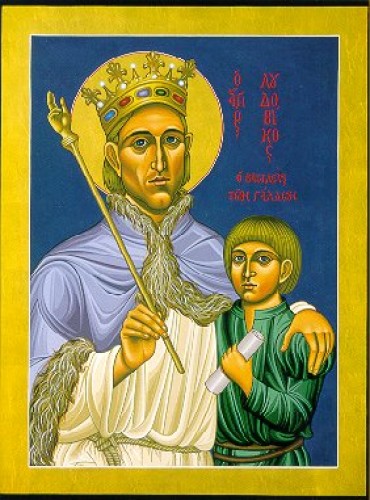The Gospel first came to the people of northern England in 627, Edwin, king of Northumbria, was converted by a mission from Canterbury led by Paulinus, who became the first Bishop of York. Edwin’s death in battle in 632 was followed by a severe pagan reaction. A year later, his exiled nephew Oswald gained the kingdom and proceeded at once to restore the Christian faith in Northumbria.
During his youthful exile, Oswald had lived at the island monastery of Iona, where he was converted and baptized. Hence he sent to Iona, rather than to Canterbury, for a bishop by whose teaching and ministry the Northumbrians might come to faith in Christ. The first bishop sent from Iona was an austere man who left England after a time, having met with no success in his preaching, reporting to the Irish fathers that the English were an ungovernable people of an obstinate and barbarous temperament. During a conference held to decide whom the monks of Iona would next send to the English, Aidan, a monk of Iona, remarked to the previous missionary, “Brother, it seems to me that you were too severe on your ignorant hearers. You should have followed the practice of the Apostles, and begun by giving them the milk of simpler teaching, and gradually nourished them with the word of God until they were capable of greater perfection and able to follow the loftier precepts of Christ.” At these words, the monks realized that Aidan was the man to be made bishop and sent to the English. Thus Aidan, a man of great gentleness, moderation, and holiness, was sent as the new head of the mission to Northumbria. Aidan centered his work not at York but on the tidal island of Lindisfarne, which Oswald had granted to the Irish for their missionary endeavors.
Aidan and his missionary monks and the English youths whom they converted and trained diligently worked to establish and extend the Church of Christ throughout the kingdom of Northumbria. The king himself often accompanied Aidan on his preaching journeys and translated his sermons into English, for Aidan was not fluent in the English language. Bede writes of Aidan, that
Among other evidences of a holy life, he gave the clergy an inspiring example of self-discipline and continence, and the highest recommendation of his teaching to all was that he and his followers lives as they taught. He never sought or cared for any worldly possessions, and loved to give away to the poor who chanced to meet him whatever he received from kings or wealthy folk. Whether in town or country, he always traveled on foot unless compelled by necessity to ride; and whatever people he met on his walks, whether high or low, he stopped and spoke to them. If they were heathen, he urged them to be baptized; and if they were Christians, he strengthened their faith, and inspired them by word and deed to live a good life and to be generous to others…If wealthy people did wrong, he never kept silent out of respect or fear, but corrected them outspokenly. Nor would he offer money to influential people, although he offered them food whenever he entertained them as host. But, if the wealthy ever gave him gifts of money, he either distributed it for the needs of the poor, as I have mentioned, or else used it to ransom any who had unjustly been sold as slaves. Many of those whom he had ransomed in this way later became his disciples; and when they had been instructed and trained, he ordained them to the priesthood.
Aidan died on this day in 651, at the royal town of Bamburgh.
quoted passages are from Bede’s Ecclesiastical History of the English People, translated and © Penguin Books (1990)
The Collect
O loving God, you called your servant Aidan from the peace of a cloister to re-establish the Christian mission in northern England, and endowed him with gentleness, simplicity, and strength: Grant that we, following his example, may use what you have given us for the relief of human need, and may persevere in commending the saving Gospel of our Redeemer Jesus Christ; who lives and reigns with you and the Holy Spirit, one God, for ever and ever. Amen.
___________________________________________________________________________________________
The icon of Saint Aidan of Lindisfarne is taken from Aidan Hart’s gallery of icons and is reproduced here with his generous permission.










